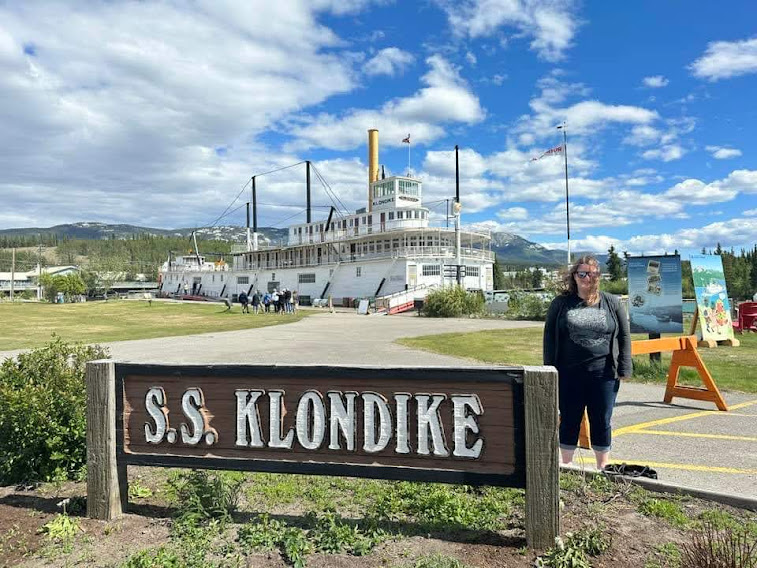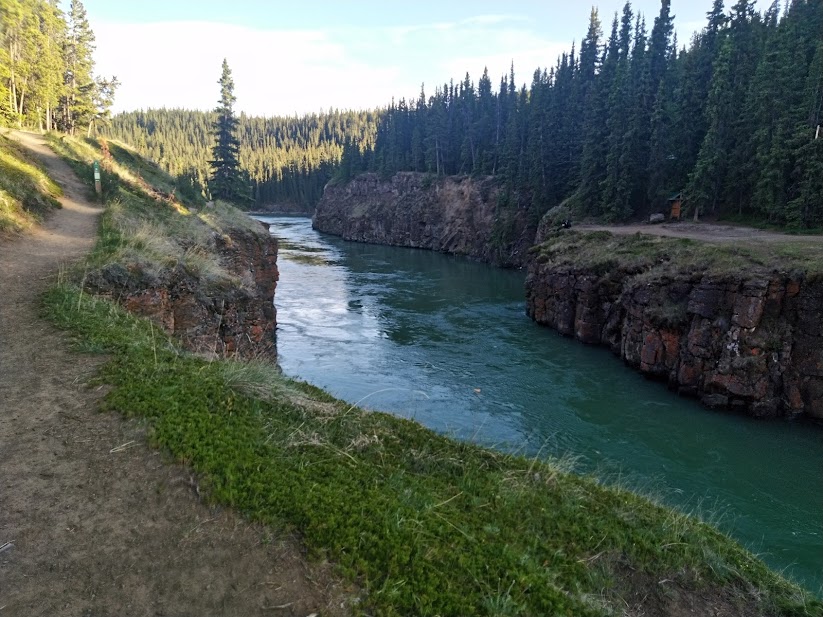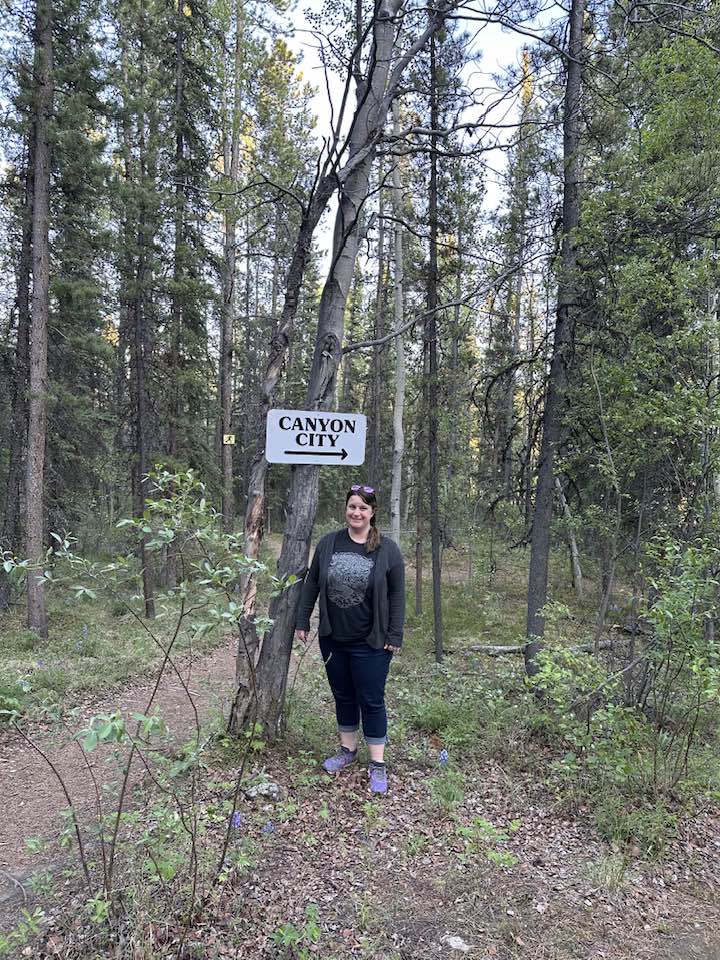I was happy to take a recent trip with a friend to Whitehorse, Dawson City, and Atlin, and over the coming weeks, I’ll be sharing a series of posts about my time there.

While I would have loved to make the drive, timewise, it made sense to fly to Whitehorse from Vancouver. We travelled with Air North, and I’d just like to say: “Wow!” Not only did they not charge me for a checked bag, but there was also a complimentary sandwich and a WARM COOKIE! Two thumbs up!
My first significant stop was the S.S. Klondike National Historic Site in Whitehorse.

The S.S. Klondike was launched in 1937 by the British Yukon Navigation Company, a subsidiary of the White Pass & Yukon Route Railway. She replaced an earlier sternwheeler of the same name which had been active from 1929 until her wreck in 1936.
The Klondike carried both passengers and freight, and primarily worked between Whitehorse and Dawson City. Notably, she was the last sternwheeler to be used commercially on the Yukon River. The Klondike was hauled ashore at Whitehorse in 1955 and donated to the Government of Canada in 1960. She was moved to her present site in 1966, designated as a National Historic Site in 1967, and opened to the public in 1981.
There are multiple guided tours offered by Parks Canada throughout the day, but access to the Klondike itself is currently somewhat restricted as she is undergoing restorations. One of just a few remaining steam-powered paddlewheelers of the hundreds that once worked on the Yukon River, the Klondike was definitely worth a visit.
My first day finished off with an evening visit to Miles Canyon. The beautiful turquoise waters of the Yukon River are a lot tamer now due to the nearby hydroelectric dam, but during the initial stages of the Klondike Gold Rush, many boats were wrecked in the canyon’s dangerous rapids.

We hiked for about an hour on parts of the extensive trail network in the area. The first point of interest was the Robert Lowe Bridge. Named after a long-serving politician, the 85-foot suspension bridge was built in 1922 as a tourist attraction. We also checked out the former site of Canyon City, a gold rush ghost town. Very little evidence is left of the townsite, which at one time apparently included a hotel, saloon, restaurant, store, stables, machine shop, and a North-West Mounted Police post, but there’s some interpretive signage and a restored tramway car. Prior to being a stopping place for those heading to the Klondike, the area was used for fish camps by local First Nations communities.
Even though we’d spent a good part of the day travelling to get there, I felt pretty happy about my initial day in the Canadian North.

